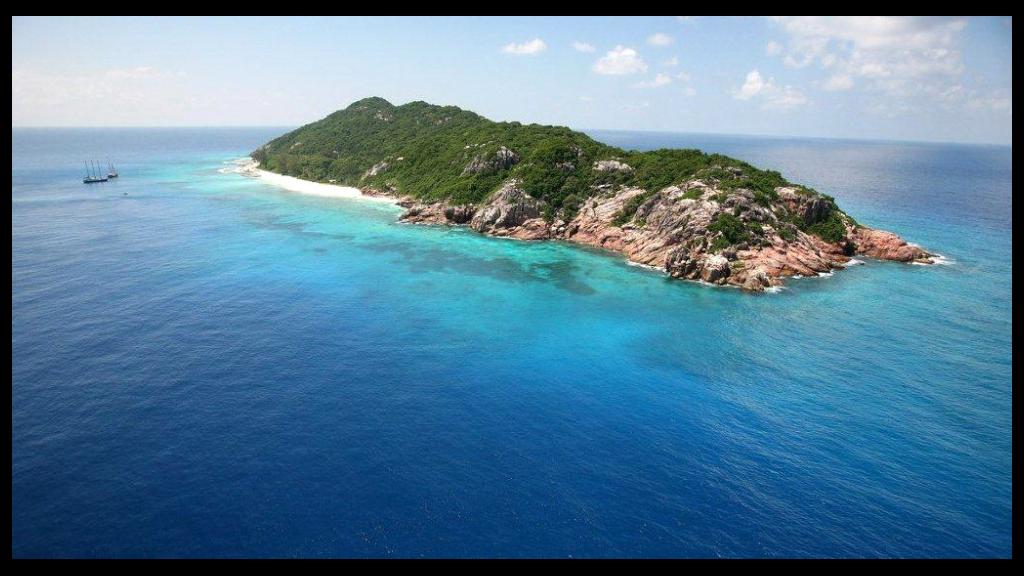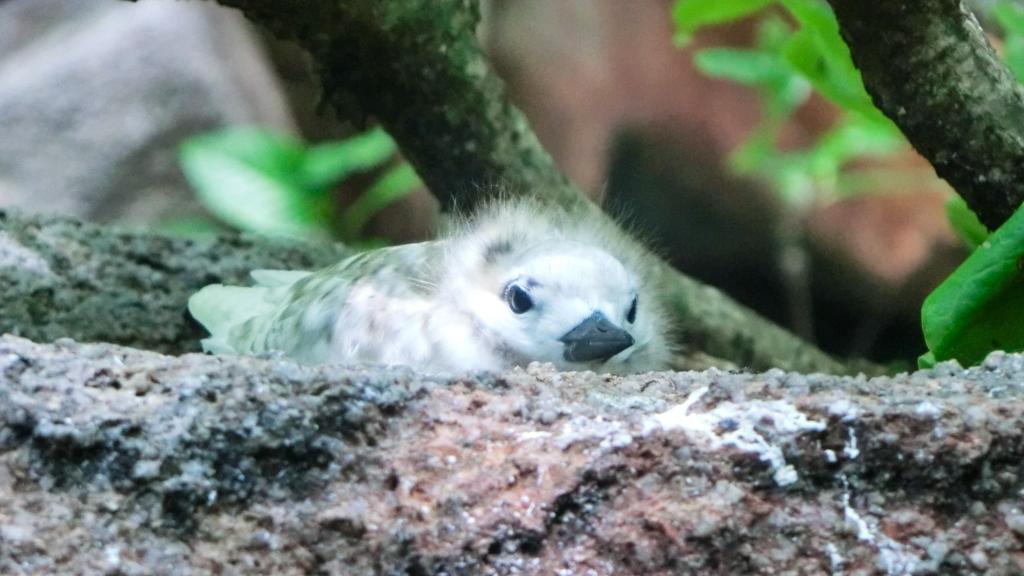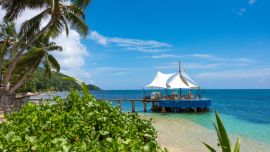Aride
Aride: Untouched, Unspoilt Nature
Those who picture a dry, arid piece of land, as the name might suggest, will certainly find themselves in for a surprise. This 68-hectare island, situated 10 km north of Praslin, is actually extremely lush and green, and, just like the coral reef off its coast, is a conservation area.
Aride is the northernmost of the inner granite islands and measures 1.7 km (1 mile) in length and 500 metres in width. While the coral reef here is one of the most popular diving sites in the Seychelles, the island itself is only inhabited by an administrator, some workers, and a few biologists who devote themselves to protecting the island and its marine flora. More than thirty rare bird species with populations in the thousands nest here in the dense shrubbery. In fact, on Aride, there are more kinds of sea birds than on all of the other granitic islands of the Seychelles. Amongst others, you will find the Seychelles blue pigeon, the sooty and white tern, the lesser noddy, the shearwater, the Seychelles brush warbler and other tropical birds. A flock of frigate birds circulate the island almost permanently, spending much of the year here. That said, they breed more than 1,000 km away on Aldabra. Three skink and three gecko species, as well as a few harmless snake species also have their home on Aride. On the beach you will encounter numerous ghost crabs, while in winter two additional species of sea turtles come onto land to lay their eggs.

Lush vegetation covers the island: coconut trees thrive here as well as broadleaf trees, guavas, bananas, oranges, papayas, aubergines, ginger, turmeric, and chillies. The highly fragrant Wright's gardenia is an endemic plant species which grows up to 6 m high and is decorated with red and white calyx. Because of their small, lemon-shaped fruits the locals gave them the name "bwa sitron".
The sale of Sooty Terns was once a very lucrative business, a fact that significantly decreased the population and something that, due to other influences such as the establishment of coconut plantations, greatly disturbed the ecological balance. British chocolate maker Christopher Cadbury bought the island in 1973 and, from then on, allowed no further alterations to its nature. Since 1979, Aride has also been a state-assigned nature reserve that has been monitored since 2008 by the Island Conservation Society. Similarly to Bel Ombre on Mahé, Moyenne on Aride is thought to be home to pirate treasure. Blasting and drilling, however, have so far revealed no gold or other precious goods, and after a few attempts, the island itself was simply name a treasure and the search was ended.
Only the boat of the island's administration team may land on the sandy beach. Visitors arriving by boats of excursion providers from Praslin (the crossing takes about 30 minutes), therefore have to change at sea onto this boat. Nature lovers, biologists, and wildlife photographers are examples of ideal candidates to visit to the island's unique refuge. For a day trip, it is best to contact your hotel reception or a local travel agent. Between October and April, the excursion is offered several times a week, while in the other months it depends on weather conditions.

On the laid-out circular walking path you can experience the diverse nature of Aride up-close. The guided two-kilometre tour starts at the house of the former island owner and takes about two hours. To the west, you pass a banana plantation, while on the right you can see white tropical birds nesting under the rocks. Various trees whose fruits are used, amongst other things, to nourish the island's few inhabitants, along with a freshwater pool full of fish whose origin still raises questions today can also be seen along the route. Meanwhile, you're sure to meet numerous lizards during your tour as they live here in large quantities. The tallest tree on the island, a Banyan, also stands by the trail and offers a nesting site for around 1,000 common noddy terns. Perhaps you’ll hear the song of cardinal birds at the junction located further to the west. Among the rocks to the west, mudskippers live alongside the crabs and are able to take oxygen from both the water and the surrounding air. Your reward for walking up the 134 metre-high Gros La Tête is a fantastic view of the sea and as well as North, Silhouette, Mahé, Cousine, Cousin, Praslin, Curieuse, La Digue, Félicité, Marianne, Petite Soeur and Grande Soeur. The variety of birds that circle the mountain peaks complete the backdrop in the most impressive manner.
If you follow the road further to the left, you end up on the white sandy beach where you can watch kakatoi fish in calm water. They break pieces of coral skeletons off with their hard mouths and grind it with their jaws. In fact, thanks to their efforts, the Seychelles has such soft, white beaches to offer. Beach areas that are frequented by sea turtles for nesting are marked accordingly and should of course not be visited, similarly, on hikes nothing should be touched or taken. The path continues to the small island cemetery, which can be seen from a visitor hut. The trees located north from here like the Mapou, Takamaka and Lafouche were supposedly the first living organisms on the island.

